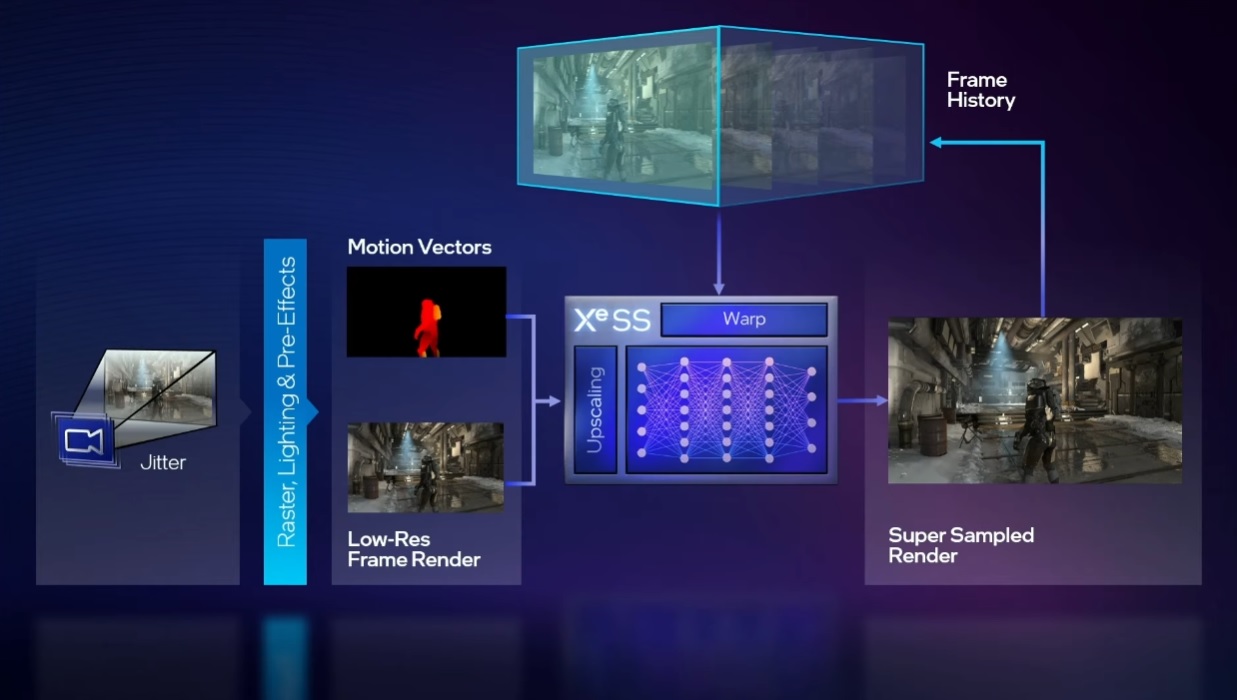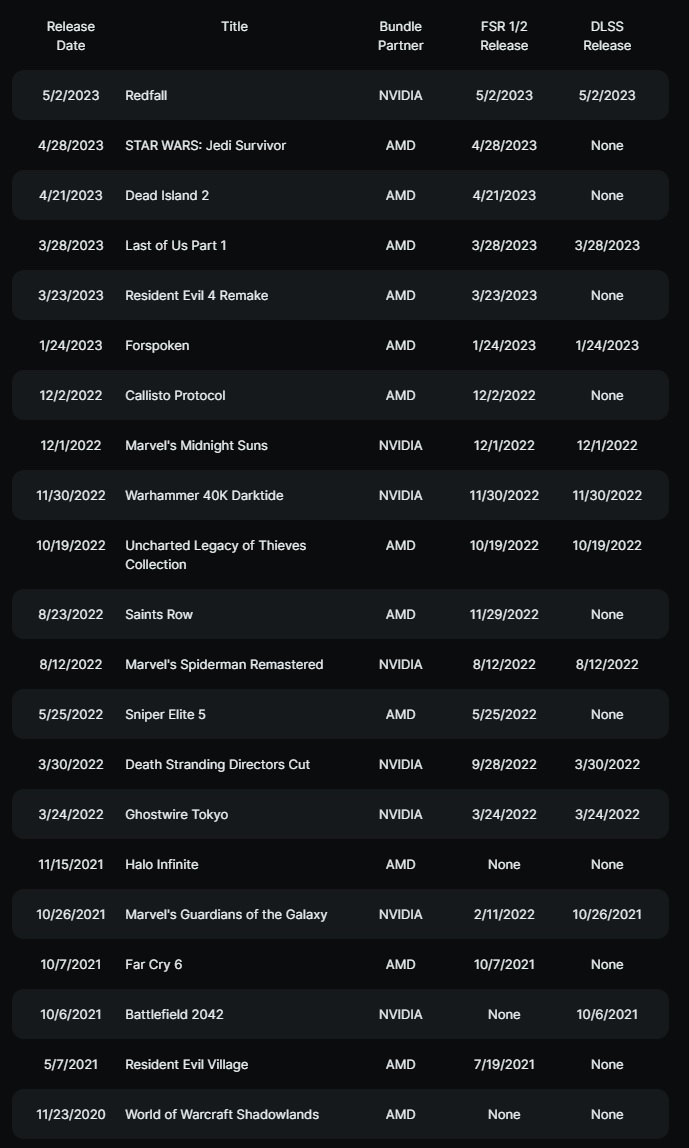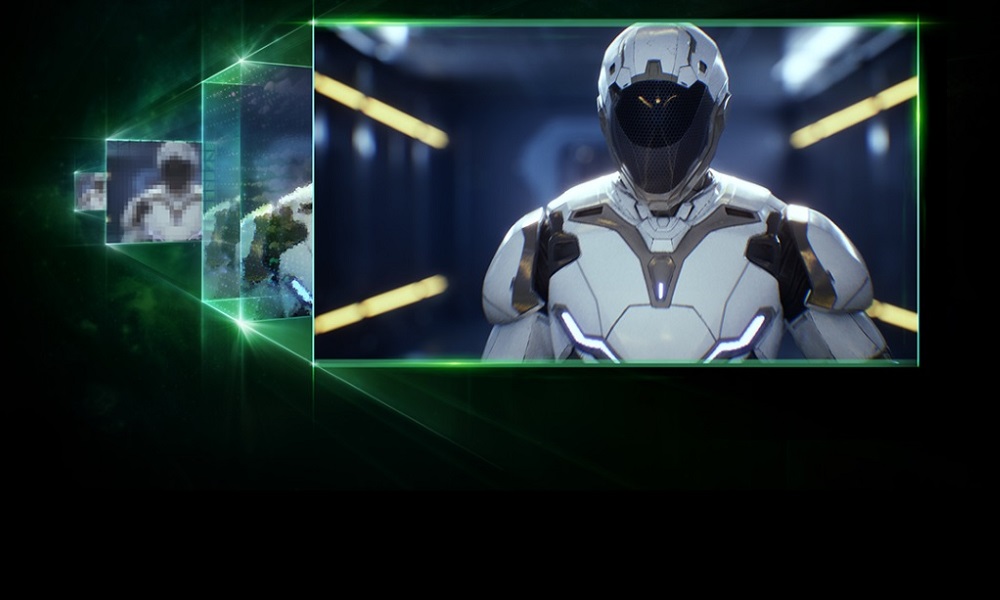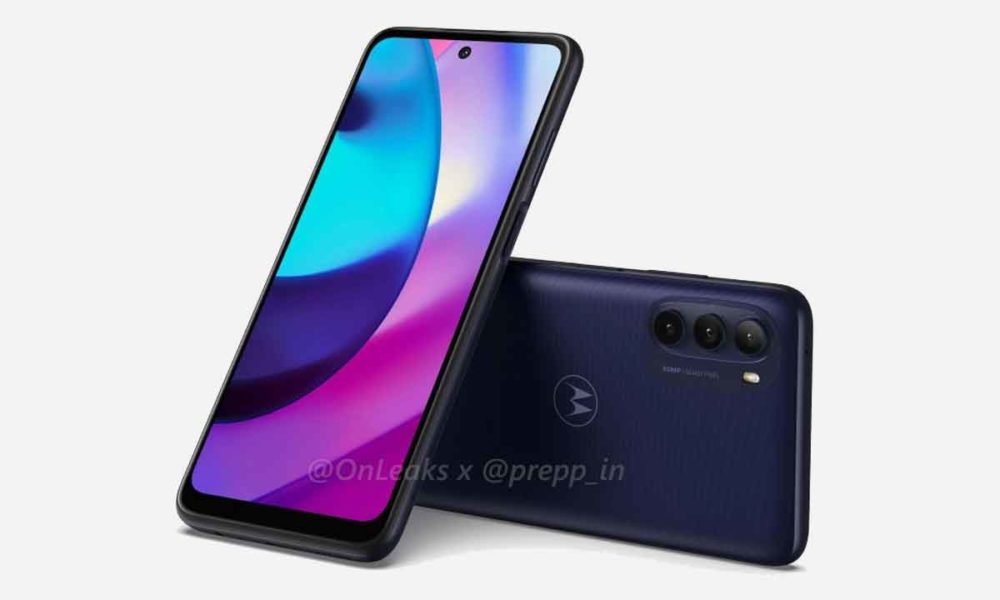
AMD’s FSR technology is implemented today in a lot of gamesand the same happens with NVIDIA DLSS and Intel XeSS, although this latest technology came later and its integration has been slower and more modest, a reality that has not changed yet, and it is normal due to the low quota of market that Intel has.
the three are image rescaling techniques that allow you to significantly improve performance in games, but they work in very different ways. AMD FSRs does not require specific hardware to work in games, it is Open Source and works with a large number of graphics cards from AMD, NVIDIA and Intel.
The same goes for Intel XeSS, which also works on rival graphics cards and can work without dedicated hardware. via DP4a instruction set. However, on those graphics cards that do not have dedicated hardware, it does not work as well, and the performance improvement is sometimes not only null, but it can even be regressive (producing a loss of performance).
In the case of NVIDIA DLSS, it is a very easy standard to implement thanks to the Open Source framework that NVIDIA itself made available to developers, although requires dedicated hardware to function so it is only compatible with GeForce RTX 20 and above. In return it is the technology that offers the best results both in terms of performance and image quality.
Games promoted by AMD and exclusive FSR: limiting the competition?
WCCFTech has carried out an interesting investigation on a subject that, to be honest, has been very curious to me, the apparent exclusivity of FSR as the only upscaling technology available in games promoted by AMD. Before getting into the matter, I want to remind you that a promoted game is one that has been offered by AMD or NVIDIA as a gift for the purchase of their graphics cards, and also those that have been advertised highlighting the support of technologies from one company or another. .
For example, Redfall would be a game promoted by NVIDIA and Dead Island 2 would be one promoted by AMD. It is normal that in these games the technologies of one or another company are given priority, but the curious thing is that almost all the important games sponsored by NVIDIA have had FSR support since release or have received it at a later date. Only Battlefield 2042 It has run out of support for that AMD technology, but has the same happened with the games promoted by the Sunnyvale giant? In the image that you will find just below these lines you can see it clearly.
Games promoted by AMD like Star Wars Jedi Survivor, Dead Island 2, Resident Evil 4 Remake, The Callisto Protocol, Saints Row, Sniper Elite 5, Far Cry 6 and Resident Evil Village support FSR, but they don’t support DLSS, and it seems that they will never receive such support. Does this mean that agreements have been adopted to block competition? An AMD spokesperson has come out to clarify this issue and has said that:
“To clarify, there are community sites that track the implementation of upscaling technologies, and these sites indicate that there are a certain number of games that currently only support DLSS (for example, see the link).
AMD FidelityFX Super Resolution is an open source technology that supports a variety of GPU architectures, including consoles and competitive solutions, and we believe that an open approach that is widely compatible with multiple hardware platforms is the best approach that benefits developers and gamers alike. AMD is committed to doing what’s best for game developers and gamers, and we give developers the flexibility to implement FSR in any game they choose.”
Basically what AMD is saying is that there are games that are limited to DLSS, implying that FSR exclusivity should be seen as normal, and that give developers the ability to introduce FSR into their games if they wish. This doesn’t answer the question on the subject of exclusives, that’s for sure, but it’s interesting to see that in a game like Star Wars Jedi Survivor an unofficial implementation of DLSS can work much better than the officially implemented FSR.
For his part, Keita Iida, vice president of developer relations at NVIDIA, commented that:
«NVIDIA does not block, restrict, discourage, or prevent developers from implementing competing technologies no way. We provide the support and tools for all game developers to easily integrate DLSS if they want and even created NVIDIA Streamline to make it easier for developers to add competitive technologies to their games.”.
NVIDIA’s answer does answer the question and was as clear and precise as we could wish for. The ideal for all is that the games are compatible with the most important technologies of the moment, and that there are no exclusivities that could harm one or the other party, because in the end the only loser is the user.




